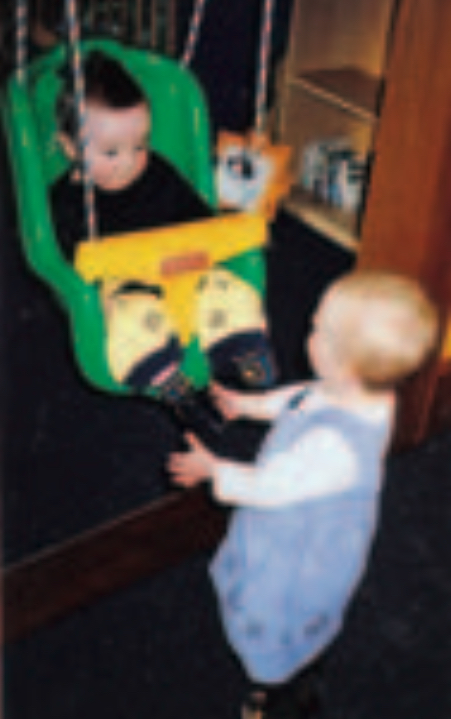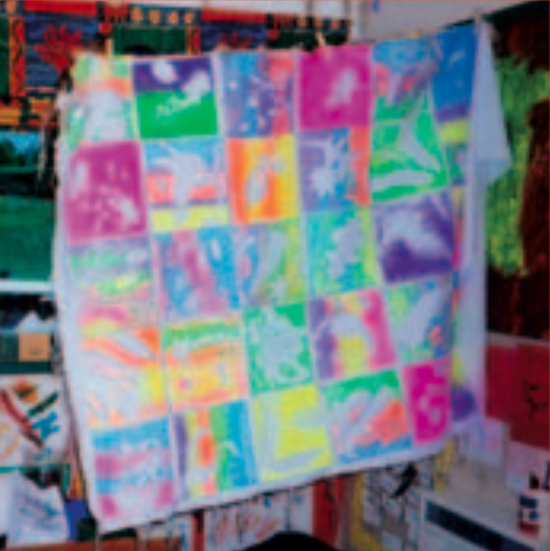Kei Tua o te Pae
Kei Tua o te Pae/Assessment for Learning: Early Childhood Exemplars is a best-practice guide that will help teachers continue to improve the quality of their teaching.
The exemplars are a series of books that will help teachers to understand and strengthen children's learning. It also shows how children, parents and whānau can contribute to this assessment and ongoing learning.
We are making improvements to our download-to-print functionality. So if you want a printed copy there are PDF versions available at the bottom of the main cover page.
The four domains of Belonging – Ngā rohe e whā o te Mana Whenua
Te Whāriki elaborates on the Belonging/Mana Whenua strand as follows:
"Ko te whakatipuranga tēnei o te mana motuhake, te mana tūrangawaewae, me te mana toi whenua o te tangata … ngā tūmanako mō te mokopuna. Kia mōhio ia ki ōna tūrangawaewae, ki ōna marae, ki ngā pepeha hoki o ōna iwi … ki te mana o te whenua … Kia mōhio ia ki te manaaki, ki te tiaki i te whenua, nō te mea i ahu mai te oranga i te whenua …6
Children and their families feel a sense of belonging … [They] experience an environment where:
- connecting links with the family and the wider world are affirmed and extended;
- they know that they have a place;
- they feel comfortable with the routines, customs, and regular events;
- they know the limits and boundaries of acceptable behaviour." 7
The four interwoven domains of Belonging/Mana Whenua are described (as goals) in the English text of Te Whāriki, and each domain includes indicative learning outcomes.
The exemplars presented in this book can each be allocated to one of these four domains.
-
Belonging to wider learning communities beyond the early childhood setting
Children are developing a wider horizon of interest beyond the early childhood setting and beyond their home settings.
Learning dispositions and working theories include developing an interest in and a recognition of new learning identities or “possible selves”8 and a capacity to “read” the environment and therefore to navigate between different forms of individuality and competence as defined in different communities. For some children, this involves navigating between te ao Māori and te ao whānui.9
Learning includes knowing stories of local places that have been handed down through the generations. In the exemplar “Te Tuhi a Manawatere”, the children are learning about the history of the local area around the early childhood centre. The legend of Te Tuhi a Manawatere had been passed down through the generations and was finally written up in a local historical society publication, which the teachers have accessed. The children revisit the legend, and their efforts to represent it in a range of media have been recorded.
In “Tyler’s day at the office”, Tyler, his teachers, and his parents use the fax machine to connect a workplace, the home, and two early childhood centres. The fax messages that made these connections have been collected together in Tyler’s portfolio, mapping out the progression of Tyler’s belonging journey.
In “Tāwhirimatea”, Tia’s grandmother adds a story to Tia’s portfolio that makes connections between the early childhood centre’s community and the “figured world”13 important to the home community.
Assessment for learning can assist learners to make connections with their families and to participate in communities in the wider world. These communities might be built around connecting ties of interest, kinship, social role, occupation, history, or place as, for example, in the excerpt from an early childhood centre’s group learning story provided below.
From a group learning story in an early childhood centre
"Today was our bus trip to the Roger Hamon Bush. We’ve been counting the sleeps. We have also been practising our mihi and waiata and looking at posters, books, and photos so we would know what to look for.
Our kindergarten mihi acknowledges Pirongia te Maunga, Waikato te Awa, Kirikiriroa te Papa e. So we talked about Hamilton as we rode along in the bus. We saw the river as we rode next to and over it, and best of all, we saw Pirongia as we got off the bus. We sang our mihi to Pirongia, which helped make our mihi more meaningful to us all."
-
Belonging in a particular early childhood setting
-
Children bring interests to their early childhood settings, and they also develop an interest in a range of the tasks, activities, cultural artefacts, languages, and ways of doing and knowing that are features of their early childhood setting. This domain is important because it supports a developing disposition towards lifelong learning and a commitment to an educational setting beyond the home.

Assessments give value to children being ready, willing, and able to find a point of connection in a topic, an activity, a person, or an object. Working theories for making sense of the world include children’s understanding that they have a place here. “Jedd’s increasing participation” is an account of Jedd’s learning strategies and dispositions in relation to participation. It demonstrates how these strategies and dispositions become more frequent, more connected, more distributed, and more mindful, a view of continuity outlined in Book 10. In this exemplar, Jedd’s teachers revisit the documentation in order to recognise and build on the continuity.
In “Suelisa’s sense of belonging”, Suelisa’s assessment portfolio is an artefact of belonging, apparently signifying for Suelisa the relationship between herself, her family, and the early childhood setting.
-
-
Belonging situated in routines, customs, and regular events
-
Routines, customs, and regular events from a range of contexts enrich children’s learning. Children learn that routines, customs, and regular events will be different in different places. They also learn that these routines can be considered and sometimes changed. Children learn strategies for coping with a moderate amount of change and transition.
The exemplar “Farewell to a taonga” documents a centre’s development of practices and customs around the departure of a staff member and her “being gifted” to another centre.

-
-
Belonging situated within rules, rights, and responsibilities
-
Experiences in early childhood settings can encourage children to puzzle over questions of responsible behaviour, the rights of others, and fairness. (Aspects of this domain are also found in Goal 1 of the Contribution/Mana Tangata strand).
Documented assessment can have a role to play here, especially if the assessments are accessible to children, families, and whānau. Opportunities to reflect on these topics are frequently provided by revisiting events with other people and considering a range of viewpoints.
The exemplar “The meeting” records just such an opportunity for reflection. Working theories for making sense of the world include a recognition that playing and working in a group includes considering the interests and rights of others. Having a sense of belonging also includes children recognising the right of all children to have a say in matters that concern them.15

In “Fergus and William take their folders outside”, the teacher offers her own opinion about whether the two boys should take their portfolios outside, but she acknowledges the two boys’ right to have a say in the matter.
-
